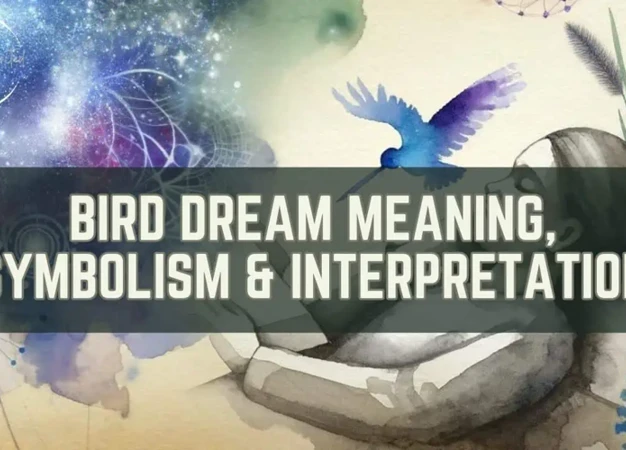Have you ever found yourself lost in a daydream, only to snap back to reality and wonder what it all meant? Daylight dreams, also known as waking dreams or daydreaming, are a fascinating phenomenon that occur when our mind wanders off into a dream-like state while we are awake. Unlike regular dreaming that happens during sleep, daylight dreams can happen at any time and often leave us with a sense of wonder and curiosity about their hidden meanings. In this article, we will explore the intriguing world of daylight dream meaning and guide you through the process of unraveling the secrets of your subconscious mind. Get ready to dive deep into the realm of your imagination and discover the significance behind these captivating daydreams.
Understanding Daylight Dreaming

Daylight dreams, also known as waking dreams or daydreaming, are a unique and perplexing experience where the mind enters a dream-like state while a person is awake. Unlike regular dreams that occur during sleep, daylight dreams happen during conscious hours, often when the mind is wandering or idle. These dreams can take various forms, ranging from vivid visualizations to abstract thoughts and fantasies. Though often fleeting, they can leave a lasting impact on our thoughts and emotions.
While many people dismiss daydreaming as a form of escapism or unproductive thinking, it actually serves an important purpose in our lives. Daylight dreaming allows our mind to creatively explore ideas, solve problems, and make sense of our experiences. It provides an outlet for our subconscious thoughts and desires to surface, offering valuable insights into our inner selves. Understanding the significance of daylight dreaming can help us harness its power and use it as a tool for personal growth and self-discovery.
1. What are Daylight Dreams?
Daylight dreams, also known as waking dreams or daydreaming, are a captivating phenomenon where the mind enters a dream-like state while a person is awake. These dreams can manifest in various forms, such as vivid visualizations, imaginative scenarios, or even abstract thoughts. Unlike regular dreams that occur during sleep, daylight dreams occur during conscious hours when the mind is free to wander. They often arise spontaneously and can be triggered by external stimuli, personal experiences, or even subconscious desires. Daylight dreams can be fleeting moments or prolonged episodes of immersive mental exploration. They offer a unique window into our subconscious mind, providing valuable insight into our thoughts, emotions, and aspirations. Exploring the depths of daylight dreams can lead to self-discovery and a better understanding of ourselves. If you’re curious about the significance of dreams involving deceased loved ones, you can read more about it in our article about dead relatives in dream meaning.
2. The Significance of Daylight Dreaming
Daylight dreaming holds great significance in our lives, as it provides a window into our subconscious mind and offers valuable insights into our desires, emotions, and experiences. These dreams often serve as a reflection of our hidden desires, fears, and unresolved issues, giving us an opportunity to explore and understand them on a deeper level. They can also serve as a source of inspiration and creativity, sparking innovative ideas and solutions to problems. By analyzing and reflecting on our daylight dreams, we can gain a better understanding of ourselves and our life circumstances. It’s important to note that daylight dreams should not be dismissed as mere fantasies or distractions, but rather, embraced as a unique form of self-expression and self-exploration. So, the next time you find yourself lost in a daydream, take a moment to reflect on its significance and the messages it may hold for you.
The Symbolism of Daylight Dreams

The symbolism within daylight dreams holds great significance in understanding the messages and insights from our subconscious mind. Daylight dreams are filled with a multitude of symbols, each carrying a unique meaning that reflects aspects of our inner selves. These symbols can be personal to the dreamer or have universal interpretations. Common symbols in daylight dreams include flying, water, animals, and even familiar faces such as deceased loved ones. Each symbol holds its own significance and can represent emotions, desires, fears, or unresolved conflicts. By paying attention to these symbols and analyzing their meanings, we can gain a deeper understanding of our subconscious and unlock hidden truths about ourselves. Whether it’s the representation of cheating in a relationship or the desire for financial prosperity symbolized by winning the lottery, each symbol in our daylight dreams provides valuable insights into our inner world.
1. Common Symbols in Daylight Dreams
Common symbols in daylight dreams can hold deep significance and often provide clues about our subconscious thoughts and emotions. These symbols can vary widely from person to person, but there are some common themes that tend to appear. One common symbol is water, which can represent emotions, the flow of life, or a sense of calmness or turbulence. Another common symbol is flying, which can symbolize freedom, escape, or a desire for independence. Animals, such as snakes or birds, frequently appear in daylight dreams and can represent various aspects of our personality or emotions. It’s important to remember that dream symbols are subjective, and their meanings may vary from person to person. Keeping a dream journal or engaging in self-reflection can help you uncover the personal significance of these symbols in your own daylight dreams.
2. How Symbols Reflect Your Subconscious
Symbols play a crucial role in daylight dreams as they serve as a direct link to our subconscious mind. When we daydream, our thoughts and fantasies are often accompanied by symbolic images, objects, or scenarios that hold deeper meanings. These symbols are personal to each individual, as they are derived from our unique experiences, beliefs, and emotions. For example, a dream about cheating on a partner can be a symbol of insecurity or dissatisfaction within a relationship, while dreaming about winning the lottery may represent a desire for financial security or a change in circumstances. By analyzing these symbols and their connections to our waking life, we can gain insight into our hidden desires, fears, and unresolved conflicts. Understanding how symbols reflect our subconscious allows us to unlock the deeper meanings behind our daylight dreams and gain a better understanding of ourselves.
Analyzing Daylight Dream Themes

Analyzing daylight dream themes can offer valuable insights into our subconscious thoughts and emotions. By examining the recurring themes that appear in our daydreams, we can uncover hidden patterns and gain a deeper understanding of ourselves. Daylight dream themes can vary greatly from person to person, ranging from everyday scenarios to fantastical adventures. Some common themes include flying, falling, being chased, or being back in school. These themes often reflect underlying anxieties, desires, or unresolved issues in our waking life. It’s important to approach these themes with an open mind and explore the emotions and symbolism associated with them. By delving into the meaning behind these themes, we can gain clarity and potentially address any underlying issues that may be affecting us in our waking life.
1. Examining Recurring Daylight Dream Themes
Examining recurring daylight dream themes can provide valuable insights into the workings of our subconscious mind. When certain themes or images appear repeatedly in our daydreams, it suggests that they hold significant meaning for us. These recurring themes can manifest in various forms, such as dreams of falling, flying, or being chased. By paying close attention to these patterns, we can begin to unravel their symbolism and uncover hidden emotions or desires that may be influencing our waking lives. For example, recurring dreams of cheating in relationships may indicate feelings of guilt or a desire for more excitement. On the other hand, dreams of winning the lottery might signify a yearning for financial security or a need for luck in life. Exploring these recurring daylight dream themes can offer us valuable clues about our deepest desires and fears, allowing us to gain a deeper understanding of ourselves.
2. The Emotional Impact of Daylight Dreams
The emotional impact of daylight dreams can be profound. These waking dreams often stir up a range of emotions, from joy and excitement to sadness and fear. The vividness and intensity of these emotions can sometimes catch us off guard, leaving us pondering their origin and significance. Daylight dreams have the power to evoke deep-seated emotions that we may not be fully aware of in our conscious waking state. They can bring unresolved issues or hidden desires to the surface, providing us with valuable insights into our emotional landscape. By paying attention to the emotions evoked by our daylight dreams, we can gain a better understanding of our innermost feelings and work towards emotional healing and growth.
Interpreting Daylight Dreams

Interpreting daylight dreams can be a fascinating and insightful journey into the depths of our subconscious mind. Each daylight dream carries its own unique symbolism and meaning, which can offer valuable clues about our emotions, desires, and inner struggles. To interpret daylight dreams, it is important to consider the context in which the dream occurred. Factors such as the setting, people involved, and emotions experienced during the dream can provide valuable insights into its underlying message. Keeping a dream journal and reflecting on the themes and symbols that frequently appear in your daylight dreams can also aid in interpretation. By analyzing these symbols, we can gain a deeper understanding of our subconscious and the aspects of our waking life that may be affecting our dreams. So, grab a pen and paper, and start unraveling the secrets hidden within your daylight dreams.
1. The Role of Context in Interpretation
When it comes to interpreting daylight dreams, context plays a crucial role in understanding their meaning. The context refers to the specific circumstances, emotions, and events surrounding the dream. To effectively interpret a daylight dream, it’s essential to consider the context in which it occurred. For example, if you had a dream about cheating, it’s important to examine the context of your relationships and the emotions you are experiencing in waking life. Understanding the context allows you to uncover the underlying messages and symbols within the dream and connect them to your current reality. By analyzing the context, you can gain valuable insights into your subconscious thoughts and desires, leading to a deeper understanding of yourself and your waking life.
2. Using Dream Journals and Reflection
Dream journals and reflection are valuable tools when it comes to interpreting and deciphering the meaning of daylight dreams. Keeping a dream journal involves recording the details of your dreams as soon as you wake up, capturing any symbols, emotions, or themes that stood out to you. By writing down your dreams, you create a tangible record that can be revisited later for analysis and reflection. Reflecting on your dreams allows you to delve deeper into their symbolism and connect them to your waking life. It can be helpful to ask yourself questions such as: What emotions did the dream evoke? Are there any recurring themes or symbols? How does the dream relate to my current thoughts, feelings, or experiences? By engaging in this process of introspection, you can gain a deeper understanding of your subconscious mind and uncover hidden meanings within your daylight dreams. For more about interpreting dream symbols, you can explore the meaning of cheating in dreams or the significance of winning the lottery in dreams.
The Influence of Daylight Dreams on Your Waking Life
Daylight dreams have a profound influence on our waking life, shaping our thoughts, behavior, and overall well-being. These dreams serve as a bridge between our subconscious mind and conscious reality, offering valuable insights and guidance. They have the potential to inspire creativity, enhance problem-solving skills, and ignite motivation. Daylight dream meanings often manifest in our daily lives through subtle cues, synchronicities, and intuitive nudges. Paying attention to these signs can lead to a deeper understanding of ourselves and the world around us. By harnessing the power of daylight dreaming, we can tap into our inner wisdom, make better decisions, and navigate life with a richer sense of purpose. Explore the hidden influence of daylight dreams and unlock the transformative potential they hold.
1. How Daylight Dream Meanings Manifest in Reality
Daylight dream meanings have the potential to manifest in our reality in various ways. The symbols and themes we encounter in our daydreams can have a direct impact on our thoughts, emotions, and behaviors in waking life. For example, if you frequently daydream about flying, it may indicate a desire for freedom and exploration. This could translate into a newfound sense of adventure and an openness to trying new experiences. Similarly, daydreams about being chased may reflect feelings of anxiety or a need to confront and overcome challenges in real life. By paying attention to the patterns and themes in our daylight dreams, we can gain valuable insights that can guide our actions and help us navigate our daily lives with a deeper understanding of our subconscious desires and motivations.
2. Harnessing the Power of Daylight Dreaming
Harnessing the power of daylight dreaming can have profound effects on our lives. By paying attention to the symbols, themes, and emotions that arise in our daydreams, we can gain valuable insights into our subconscious mind. One way to do this is by keeping a dream journal, where we write down our daydreams and reflect on them later. This helps us identify patterns, recurring themes, and symbols that may hold deeper meanings. Additionally, taking time for self-reflection and meditation can aid in exploring the emotions and thoughts that surface during daylight dreaming. By actively engaging with our daydreams and using them as a tool for self-exploration, we can gain a deeper understanding of ourselves and unlock our inner potential. Harnessing the power of daylight dreaming allows us to tap into our creativity, problem-solving abilities, and intuition, leading to personal growth and fulfillment in our waking lives.
Conclusion
In conclusion, daylight dreaming is a fascinating and mysterious aspect of our subconscious mind. By exploring the meanings behind our daydreams, we can gain valuable insights into our inner thoughts, desires, and emotions. While the specific symbols and themes in daylight dreams may vary for each individual, the act of interpreting and analyzing them can lead to a deeper understanding of ourselves. By keeping a dream journal and reflecting on our daydreams, we can unlock their hidden messages and apply them to our waking life. Ultimately, embracing the power of daylight dreaming can enhance our creativity, problem-solving abilities, and personal growth. So, the next time your mind begins to wander off into a daydream, remember that it is not merely a distraction, but a doorway to the secrets of your subconscious. Embrace this journey of self-discovery and let your daylight dreams guide you towards a more enlightened and fulfilling life.
Frequently Asked Questions
1. What is the difference between daylight dreams and regular dreams?
Daylight dreams occur while you are awake, often during idle moments or when your mind wanders. Regular dreams, on the other hand, happen during sleep and are often more vivid and immersive.
2. Are daylight dreams significant or just random thoughts?
Daylight dreams can hold significant meaning as they provide a glimpse into your subconscious mind and can reveal underlying thoughts, emotions, and desires.
3. Can daylight dreams be interpreted in the same way as regular dreams?
Interpreting daylight dreams is different from regular dreams as they often involve more abstract thoughts and scenarios. However, symbolic analysis and reflection can still be applied to understand their underlying messages.
4. Why do some people daydream more than others?
The tendency to daydream varies from person to person and can be influenced by factors such as personality traits, levels of creativity, and the need for mental stimulation.
5. Can daylight dreams predict the future?
Daylight dreams are not prophetic in nature and should not be taken as literal predictions of the future. However, they can offer insights into your subconscious thoughts and feelings that may influence future actions.
6. Are there any common symbols in daylight dreams?
Yes, daylight dreams often feature common symbols such as flying, falling, being chased, or encountering specific objects or people. These symbols can have personal meanings based on individual experiences and emotions.
7. How can I remember my daylight dreams?
Keeping a dream journal and recording your daylight dreams as soon as possible after experiencing them can help improve your memory and provide a reference for future analysis.
8. Can daylight dreams help with problem-solving?
Yes, daylight dreams can serve as a creative outlet and a way to explore solutions to problems or challenges you may be facing. They can offer unique perspectives and innovative ideas.
9. Can daylight dreams have emotional effects on us?
Absolutely. Daylight dreams can evoke various emotions, ranging from joy and excitement to fear or sadness. Exploring these emotions can provide valuable insights into your inner world.
10. How can I harness the power of daylight dreaming in my waking life?
To harness the power of daylight dreaming, you can use techniques such as visualization, meditation, and creative exercises that encourage imaginative thinking. Embracing and exploring your daydreams can lead to personal growth and self-discovery.







